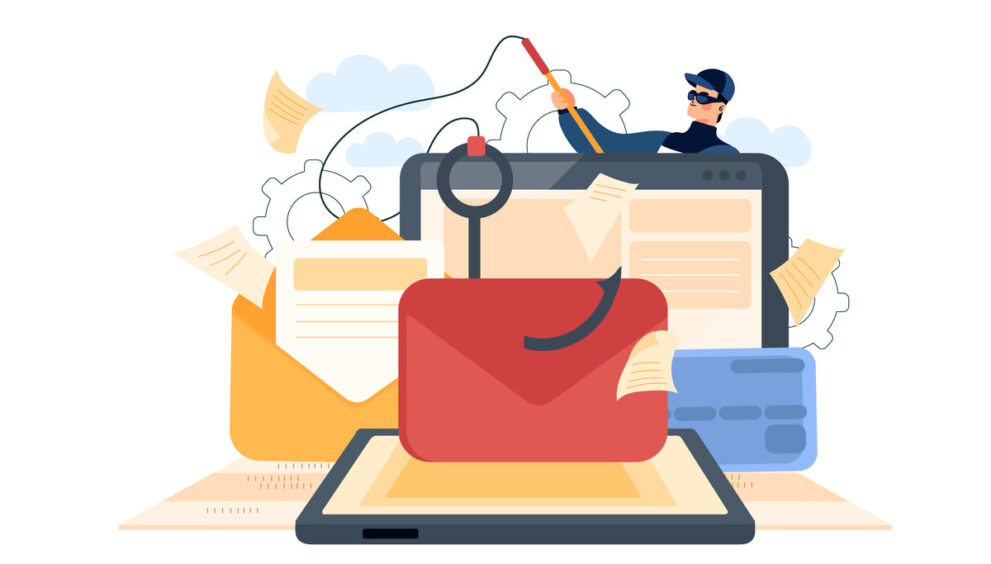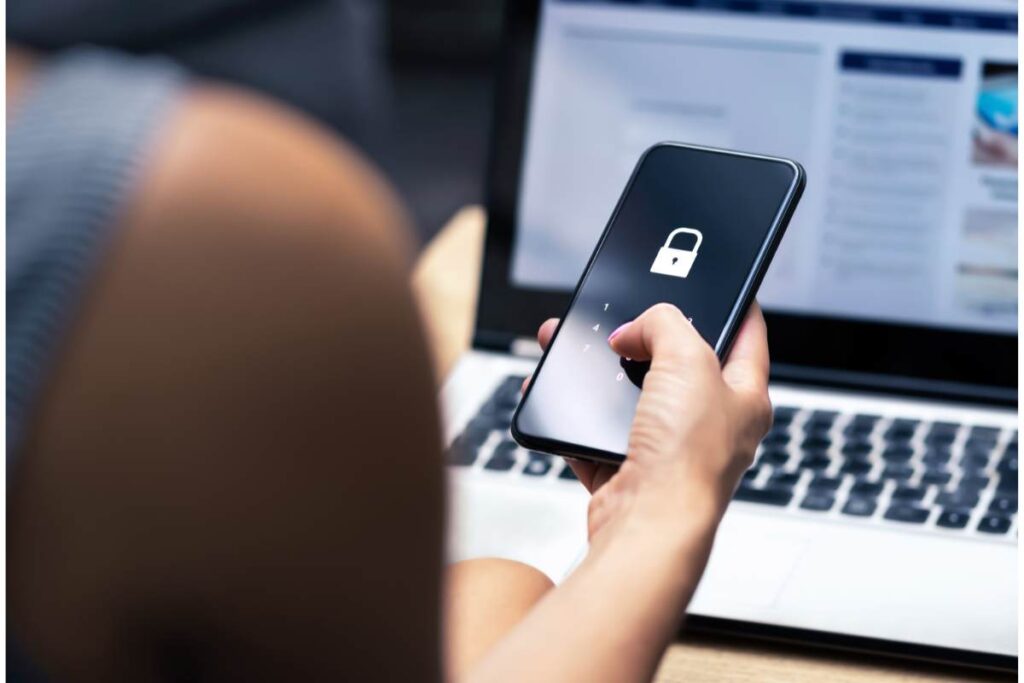Cybersecurity Best Practices for Email: Preventing Phishing Attacks

The need for enhanced email security grows along with the amount of cyberattacks. One of the most prevalent and harmful email-based attack types is phishing. They are frequently employed to steal private data, including login credentials and financial information.
You can take the following actions to stop phishing attacks:
- Recognize the telltale symptoms of phishing emails.
- Avoid opening attachments or clicking links from senders you don’t know.
- Make use of a secure email provider with anti-phishing security.
- Always keep your operating system and software up to date.
- Make use of two-factor authentication and a secure password.
These recommended practices can help defend your business and yourself from phishing attacks.
The Threats Posed by Phishing Attacks
Phishing assaults have increased in frequency and sophistication over the past few years. Phishing is a cyberattack that deceives victims into divulging important information using phony emails or websites, including passwords or credit card details.
Because scammers frequently utilize counterfeit websites and emails that closely resemble the real deal, these attacks can be challenging to identify. By employing social engineering techniques, they may also fool you into opening a malicious link or attachment.
The repercussions of falling for a phishing assault could be disastrous. You risk installing malware on your computer and using sensitive information to perpetrate fraud or identity theft.
It’s crucial to be aware of the risks and have the skills to recognize them to safeguard yourself from phishing assaults.
Here are a few advice:
- Be wary of emails or websites that request that you provide personal information. It’s probably a fraud if you weren’t expecting to be asked for this information.
- Be cautious when clicking on links or emails from unknown senders. Only click on links or attachments in emails if you know the sender.
- Before clicking links, hover over them to see where they will lead you. It can be a useful approach to identify dangerous links since scammers frequently use shortened URLs to mask them.
- Avoid opening attachments sent to you by unknown senders. Your computer could become infected by the malware present in these attachments.
- Run routine malware scans and keep your protection software up to date. It will assist in shielding your computer from potentially harmful software used in phishing attacks.
Taking action is important if you suspect a phishing attack has targeted you. Run a malware check on your computer and change any passwords that might have been hacked. It would also help to inform the appropriate authorities—like the police or your bank—about the incident.
How to Stop Phishing Attempts
Phishing aims to deceive you into disclosing personal information about yourself, including passwords or credit card details. To achieve their goals, scammers may trick you by sending fake emails or websites that appear to be from a company you trust, such as your bank.
How can you defend against phishing scams?
You can take the following steps to safeguard yourself from phishing attacks:
- Use caution while opening emails and clicking links. Only click links in emails if you are sure whether they are authentic. Before clicking a link, you can also mouse over it to see where it will lead you.
- Maintain software updates. Your operating system, web browser, and any installed applications are all included in this. Attackers frequently take advantage of security flaws that the most recent software releases have previously patched.
- When two-factor authentication (2FA) is an option, use strong passwords and enable it. Strong passwords are lengthy, distinctive, and challenging to crack. By forcing you to enter a code from your phone or another device in addition to your password when you log in, 2FA offers an extra layer of security.
- Exercise caution when disclosing personal information online. Attackers can use this information to perform focused attacks.
- Watch out for phony websites. Attackers occasionally develop phony websites that mimic the actual thing to deceive you into providing personal information. Pay close attention to the website’s URL and double-check that the spelling is accurate.
- Make use of security tools like antivirus software or password managers. By creating secure passwords and identifying phony websites, these tools can keep you safe.
What actions should you take if you believe you have been phished?
If you suspect you’ve been phished, you should first change your passwords. After that, you should notify the FTC and the impersonating company about the attack. Additionally, you can notify the Anti-Phishing Working of any phishing emails.

The Top Cybersecurity Techniques to Avoid Phishing Attacks
One of the most prevalent cyber hazards businesses and people must deal with is phishing. Phishing attacks come in various forms but always aim to deceive you into divulging sensitive data, including your login credentials or bank information. You may take a few easy precautions to safeguard yourself from phishing scams.
Four of the top methods for avoiding phishing attempts are listed below:
1. Be wary of unauthorized emails and texts.
Be wary if you get an unauthorized email or message from someone you don’t know. These emails are often used as the starting point for phishing assaults. Even if the source of the communication seems reliable, use caution before opening any attachments or clicking on any links.
2. Avoid divulging private or financial information in emails.
Never reply to an email that requests your personal or financial information. This kind of information will never be requested by email by reputable businesses.
3. Search for indications that an email is not authentic.
There are numerous obvious indicators that an email is fake. Misspellings, bad language, and unforeseen attachments are a few of these. Delete emails that seem suspicious.
4. Maintain software and security tools that are current.
Ensure your operating system and other software are patched and have the most recent security upgrades. To prevent phishing assaults, use an anti-spam filter and a reliable antivirus package.
You may help defend yourself from phishing assaults by adhering to these easy tips. Keep in mind that if anything seems off, it probably is. Don’t gamble with your financial or personal information.
The Best Way to React to a Phishing Attack
Everybody has seen the headlines that read, “Massive data breach at XYZ Company.” But the accounts of how those breaches happened are rarely seen. The solution is frequently phishing.
Phishing is a cyberattack that deceives victims into divulging personal information or infecting their machines with malware through email or malicious websites. The sophistication and targeting of these attacks are increasing, making it challenging to identify them.
What can you then do to safeguard yourself from phishing scams?
1. Be wary of unauthorized emails
Don’t click on links or open attachments emails you receive from people you don’t know or that appear to be questionable. Whether the email appears to be coming from a business or organization, you can examine their website to see whether they have published any phishing attack warnings.
2. Avoid responding to emails or pop-ups with personal information.
Genuine businesses will never email you asking for your password or credit card information. Do not reply to emails or pop-ups that request this kind of information.
3. Mouse over links to view their destination
Hover your cursor over a link in an email to see where it will take you before clicking on it. Avoid clicking on any suspicious-looking links.
4. Always update your antivirus and anti-malware programs.
Ensure your operating system and software are patched and have the most recent security upgrades.
5. Make suspicious email reports
Send any questionable emails to the business or organization they purport to be from. The Anti-Phishing Working Group is another place you can file a report.
Phishing assaults are increasing in frequency and sophistication. You can assist in keeping your information secure by being aware of the telltale indications of a phishing attempt and taking precautions to be safe.






